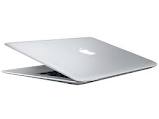doel laptop
price list
configration
DOEL laptop is currently unavailable to the public.
bangladeshi laptop doel at only tk-10,000
DOEL Primary
Model:Doel 2102
Operating System:Google Android
Processor:VIA 8650 800MHz
Display:10.0″ LCD
Hard Drive:SD Slot for Max 32 GB
RAM:512 MB
Webcam:0.3 MP
USB:USB 2.0(2 Slot)
WLAN:802.11b/g/n Wireless LAN
LAN:10/100M Ethernet LAN (RJ-45)
Price:Tk 10,000
bangladeshi laptop doel at only tk-13,500
DOEL Basic:
Model:Doel 0703
Operating System:Linux Based OS
Processor:Intel® ATOM Processor N455 1.66GHz
Chipset:Intel® NM10 Express Chipset
Graphics:Processor:Intel ® GMA 3150 Integrated
Display:10.1″WXGA LED Backlit
Max Resolution:1024 x 600
Hard Drive:HITACHI or TOSHIBA SATA 250 GB HDD
RAM:1GB DDR3
Webcam:1.3 MP
USB:USB 2.0(3 Slot)
WLAN:802.11b/g/n Wireless LAN
LAN:10/100M Ethernet LAN (RJ-45)
Price:Tk 13,500
bangladeshi laptop doel at only tk-22,000
DOEL Standard:
Model:Doel 2603
Operating System:Linux Based OS
Processor:Intel® ATOM Processor N470 1.83GHz
Chipset:Intel® NM10 Express Chipset
Graphics:Processor:Intel ® GMA 3150 Integrated
Display:12.1″WXGA LED Backlit
Max Resolution:1360 x 768
Hard Drive:Hitachi or Toshiba or Samsung SATA 320 GB HDD
RAM:2GB DDR3
Webcam:1.3 MP
USB:USB 2.0(3 Slot)
WLAN:802.11b/g/n Wireless LAN
LAN:10/100M Ethernet LAN (RJ-45)
Price:Tk 22,000
bangladeshi laptop doel at only tk-26,000
DOEL Advanced:
Model:Doel 1612
Operating System:Linux Based OS
Processor:Intel® Pentium P6200 2.13 GHZ
Chipset:Intel® HM55 Express Chipset
Graphics:Processor:Intel Graphics Media Accelerator HD
Display:14.0″WXGA LED Backlit
Max Resolution:1366 x 768
Hard Drive:Hitachi or Toshiba or Samsung SATA 320 GB HDD
RAM:2GB DDR3
Optical Drive:Samsung DVD+/-RW
Webcam:1.3 MP
USB:USB 2.0(3 Slot)
WLAN:802.11b/g/n Wireless LAN
LAN:10/100M Ethernet LAN (RJ-45)
Price:Tk 26,000
price list
configration
DOEL laptop is currently unavailable to the public.
bangladeshi laptop doel at only tk-10,000
DOEL Primary
Model:Doel 2102
Operating System:Google Android
Processor:VIA 8650 800MHz
Display:10.0″ LCD
Hard Drive:SD Slot for Max 32 GB
RAM:512 MB
Webcam:0.3 MP
USB:USB 2.0(2 Slot)
WLAN:802.11b/g/n Wireless LAN
LAN:10/100M Ethernet LAN (RJ-45)
Price:Tk 10,000
bangladeshi laptop doel at only tk-13,500
DOEL Basic:
Model:Doel 0703
Operating System:Linux Based OS
Processor:Intel® ATOM Processor N455 1.66GHz
Chipset:Intel® NM10 Express Chipset
Graphics:Processor:Intel ® GMA 3150 Integrated
Display:10.1″WXGA LED Backlit
Max Resolution:1024 x 600
Hard Drive:HITACHI or TOSHIBA SATA 250 GB HDD
RAM:1GB DDR3
Webcam:1.3 MP
USB:USB 2.0(3 Slot)
WLAN:802.11b/g/n Wireless LAN
LAN:10/100M Ethernet LAN (RJ-45)
Price:Tk 13,500
bangladeshi laptop doel at only tk-22,000
DOEL Standard:
Model:Doel 2603
Operating System:Linux Based OS
Processor:Intel® ATOM Processor N470 1.83GHz
Chipset:Intel® NM10 Express Chipset
Graphics:Processor:Intel ® GMA 3150 Integrated
Display:12.1″WXGA LED Backlit
Max Resolution:1360 x 768
Hard Drive:Hitachi or Toshiba or Samsung SATA 320 GB HDD
RAM:2GB DDR3
Webcam:1.3 MP
USB:USB 2.0(3 Slot)
WLAN:802.11b/g/n Wireless LAN
LAN:10/100M Ethernet LAN (RJ-45)
Price:Tk 22,000
bangladeshi laptop doel at only tk-26,000
DOEL Advanced:
Model:Doel 1612
Operating System:Linux Based OS
Processor:Intel® Pentium P6200 2.13 GHZ
Chipset:Intel® HM55 Express Chipset
Graphics:Processor:Intel Graphics Media Accelerator HD
Display:14.0″WXGA LED Backlit
Max Resolution:1366 x 768
Hard Drive:Hitachi or Toshiba or Samsung SATA 320 GB HDD
RAM:2GB DDR3
Optical Drive:Samsung DVD+/-RW
Webcam:1.3 MP
USB:USB 2.0(3 Slot)
WLAN:802.11b/g/n Wireless LAN
LAN:10/100M Ethernet LAN (RJ-45)
Price:Tk 26,000














